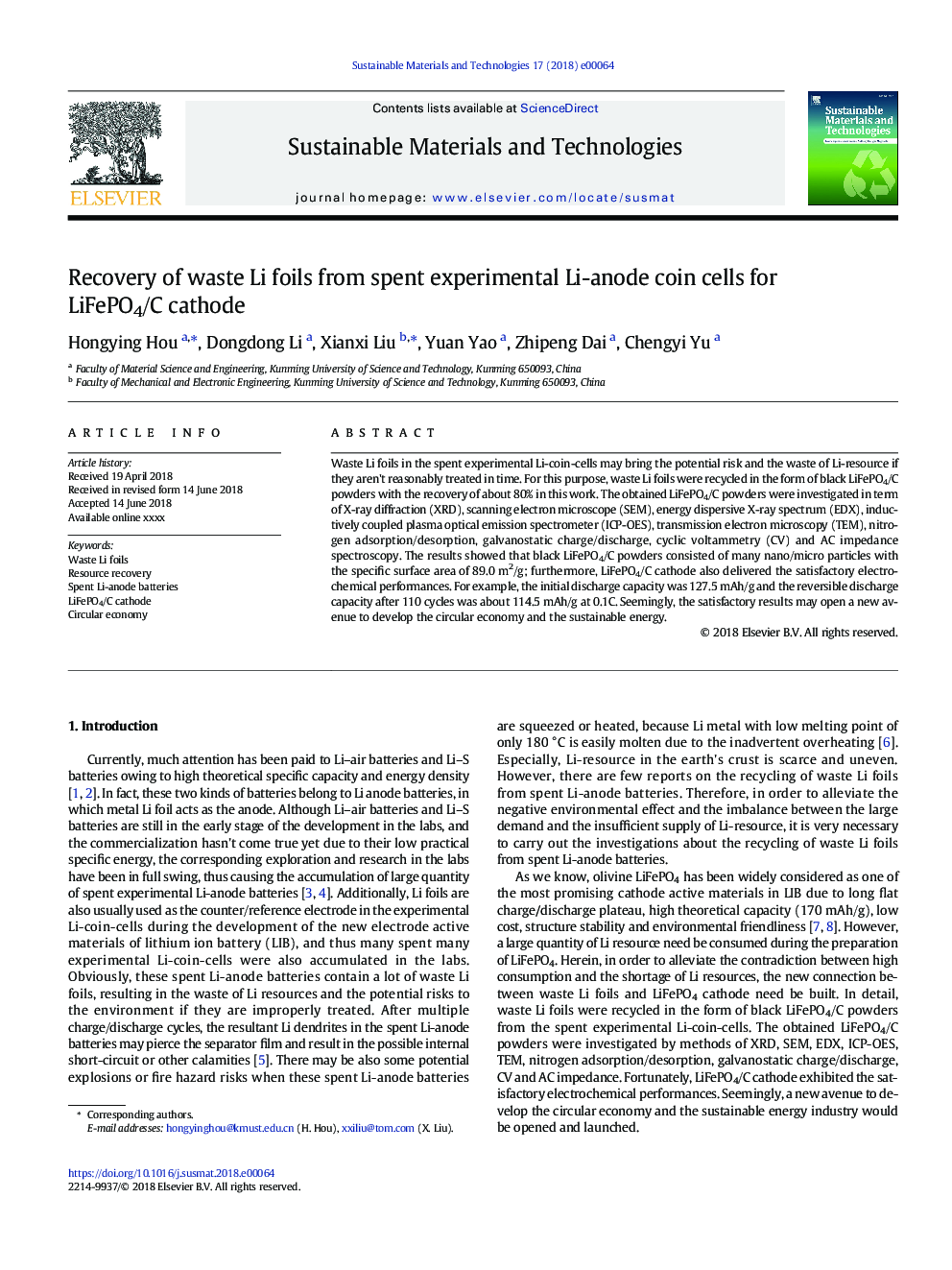| Article ID | Journal | Published Year | Pages | File Type |
|---|---|---|---|---|
| 7228325 | Sustainable Materials and Technologies | 2018 | 6 Pages |
Abstract
Waste Li foils in the spent experimental Li-coin-cells may bring the potential risk and the waste of Li-resource if they aren't reasonably treated in time. For this purpose, waste Li foils were recycled in the form of black LiFePO4/C powders with the recovery of about 80% in this work. The obtained LiFePO4/C powders were investigated in term of X-ray diffraction (XRD), scanning electron microscope (SEM), energy dispersive X-ray spectrum (EDX), inductively coupled plasma optical emission spectrometer (ICP-OES), transmission electron microscopy (TEM), nitrogen adsorption/desorption, galvanostatic charge/discharge, cyclic voltammetry (CV) and AC impedance spectroscopy. The results showed that black LiFePO4/C powders consisted of many nano/micro particles with the specific surface area of 89.0â¯m2/g; furthermore, LiFePO4/C cathode also delivered the satisfactory electrochemical performances. For example, the initial discharge capacity was 127.5 mAh/g and the reversible discharge capacity after 110â¯cycles was about 114.5 mAh/g at 0.1C. Seemingly, the satisfactory results may open a new avenue to develop the circular economy and the sustainable energy.
Related Topics
Physical Sciences and Engineering
Energy
Renewable Energy, Sustainability and the Environment
Authors
Hongying Hou, Dongdong Li, Xianxi Liu, Yuan Yao, Zhipeng Dai, Chengyi Yu,
